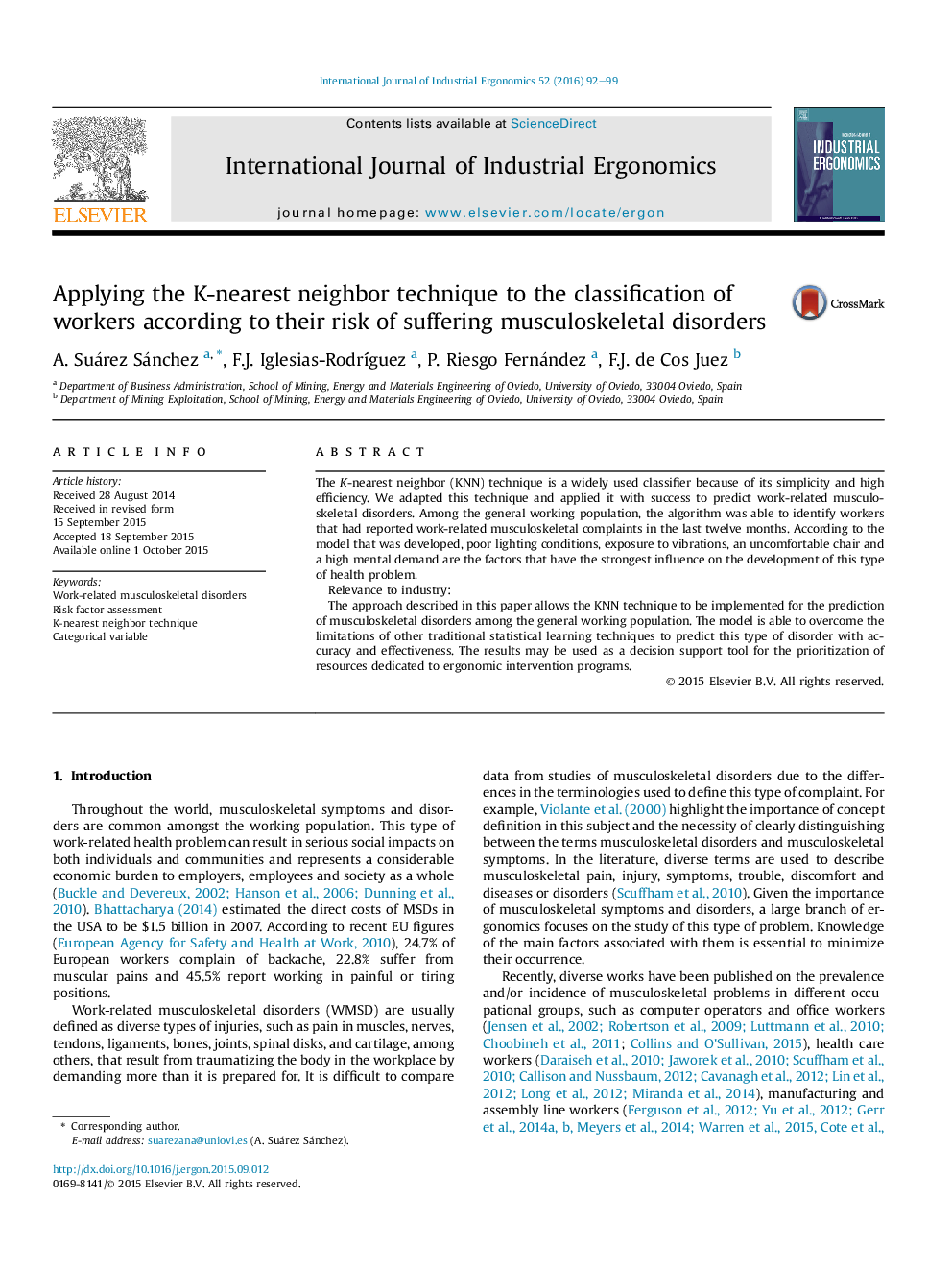| Article ID | Journal | Published Year | Pages | File Type |
|---|---|---|---|---|
| 1095894 | International Journal of Industrial Ergonomics | 2016 | 8 Pages |
•K-nearest neighbor technique can predict WMSD successfully.•The algorithm identifies those workers that had reported WMSDs.•Workplace design factors influence strongly the development of WMSDs.•Working in a too humid or too dry environment can lead to suffering WMSDs.
The K-nearest neighbor (KNN) technique is a widely used classifier because of its simplicity and high efficiency. We adapted this technique and applied it with success to predict work-related musculoskeletal disorders. Among the general working population, the algorithm was able to identify workers that had reported work-related musculoskeletal complaints in the last twelve months. According to the model that was developed, poor lighting conditions, exposure to vibrations, an uncomfortable chair and a high mental demand are the factors that have the strongest influence on the development of this type of health problem.Relevance to industry:The approach described in this paper allows the KNN technique to be implemented for the prediction of musculoskeletal disorders among the general working population. The model is able to overcome the limitations of other traditional statistical learning techniques to predict this type of disorder with accuracy and effectiveness. The results may be used as a decision support tool for the prioritization of resources dedicated to ergonomic intervention programs.
